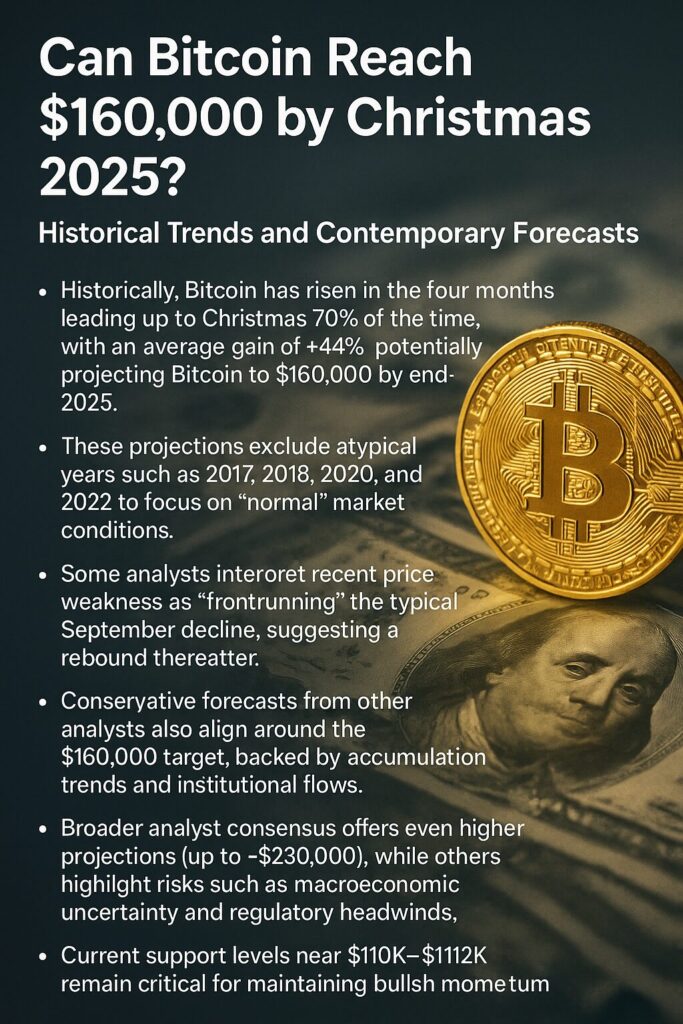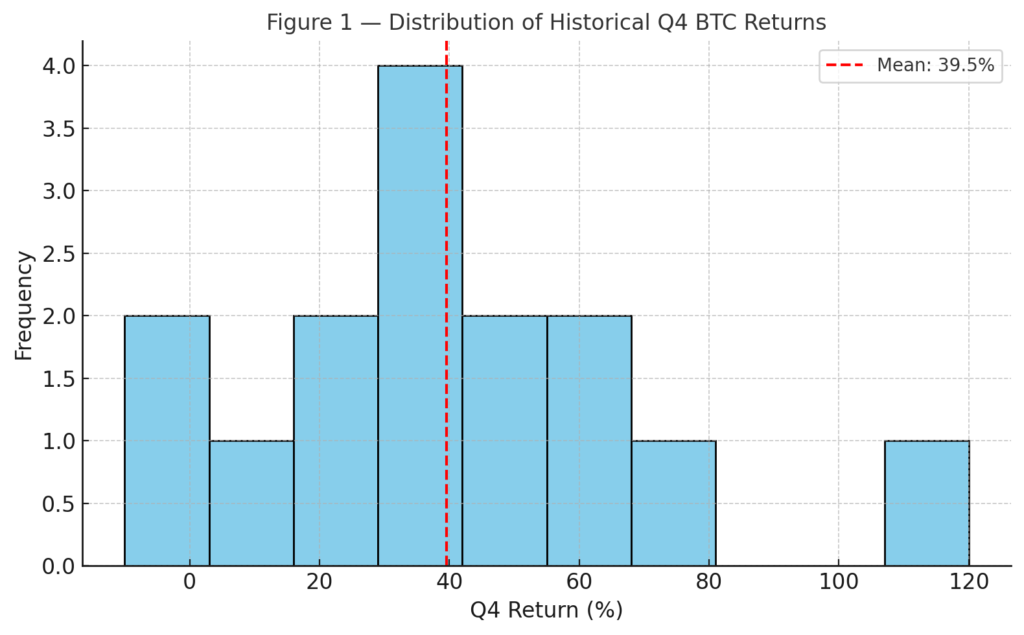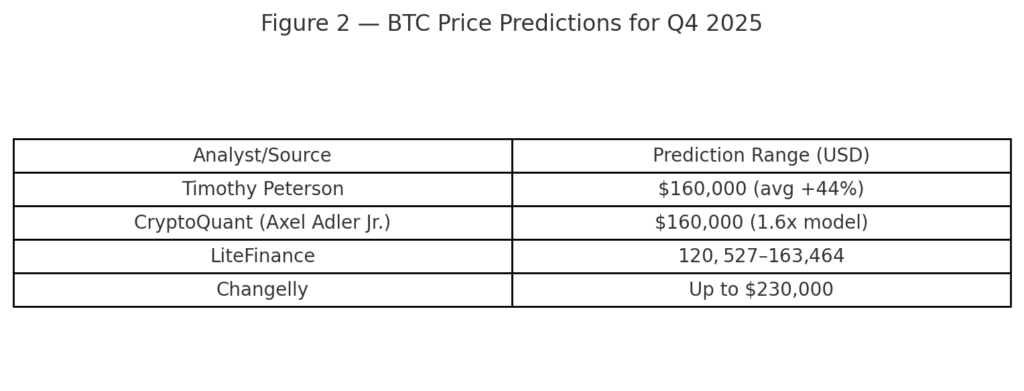
Key Points :
- Historically, Bitcoin has risen in the four months leading up to Christmas 70% of the time, with an average gain of +44%, potentially projecting Bitcoin to $160,000 by end‑2025.
- These projections exclude atypical years such as 2017, 2018, 2020, and 2022 to focus on “normal” market conditions.
- Some analysts interpret recent price weakness as “frontrunning” the typical September decline, suggesting a rebound thereafter.
- Conservative forecasts from other analysts also align around the $160,000 target, backed by accumulation trends and institutional flows.
- Broader analyst consensus offers even higher projections (up to ~$230,000), while others highlight risks such as macroeconomic uncertainty and regulatory headwinds.
- Current support levels near $110K–$112K remain critical for maintaining bullish momentum.
1. Historical Q4 Performance and the $160,000 Forecast
Network economist Timothy Peterson recently highlighted via X that in the four months preceding Christmas, Bitcoin has delivered positive returns 70% of the time, with an average gain of +44%. Applying that 44% upside to current price levels suggests Bitcoin could reach approximately $160,000 by the last week of 2025.
Peterson cautioned that this should be treated as a guideline rather than a guarantee. He deliberately excluded years like 2017, 2018, 2020, and 2022 from his analysis, labeling them as “uncharacteristic” due to their atypical market and economic conditions.
Historical Q4 BTC returns showing distribution of gains/losses.

2. September Weakness and “Frontrunning” Behavior
Bitcoin has recently declined to levels not seen since early July, stirring concerns among traders. However, some voices argue this dip simply “frontruns” Bitcoin’s typical September slump. Trader “Donny” noted that while the scale differs, the outcome might be the same—ultimately much higher—drawing comparisons to the 2017 bull market.
Furthermore, Donny pointed out that Bitcoin seems to be tracking gold’s price action with a lag—a correlation that has frequently emerged during periods of macroeconomic uncertainty.
3. Conservative and Institutional‐Backed Forecasts
Aside from Peterson, other analysts have also eyed ~$160,000 as a target, but based on different rationales. Axel Adler Jr. of CryptoQuant offered a “restrained forecast” using a 1.6 multiplier, also arriving at around $160,000. He further noted that long‑term holders are accumulating significantly around the $100,000 level—mirroring previous cycles—potentially setting the stage for a breakout.
Institutional factors further reinforce optimism. Analysts at LiteFinance report that in Q4, Bitcoin’s average price could range between $120,527 and $163,464, suggesting potential to consolidate above $160,000. Even more bullish scenarios from Changelly analysts forecast Bitcoin could soar as high as $230,000 by December.

4. Broader Outlook and Market Drivers
Several macro and structural factors could influence Bitcoin’s trajectory. Spot Bitcoin ETF inflows and increased institutional demand remain key bullish drivers. Technical levels also matter: analysts such as Tekedia flag the $110K–$112K range as a crucial support zone—failure to defend it could weaken the bullish case.
However, risks persist. Macroeconomic shocks, regulatory crackdowns, market volatility, and sentiment shifts could derail the path toward $160K. As TradingNEWS puts it, short‑term caution is warranted even as medium‑term seasonal and institutional tailwinds offer opportunity.
5. Summary and Outlook
Bringing everything together, the forecast that Bitcoin might reach $160,000 by Christmas 2025 rests on a blend of historical seasonality, technical accumulation patterns, and growing institutional demand. Conservative estimates from CryptoQuant, bullish projections from LiteFinance and Changelly, and historical Q4 performance all point toward this range—or even higher.
Yet the cryptocurrency market remains volatile. Key support levels, macroeconomic trends, and regulatory developments could significantly influence the actual outcome. For readers exploring new digital assets, new revenue sources, or practical blockchain applications, maintaining awareness of these variables will be essential.

